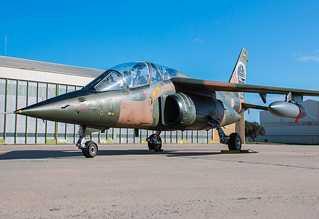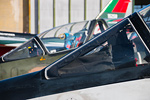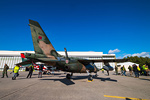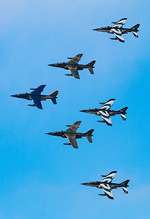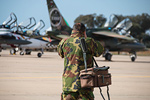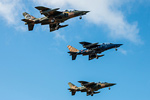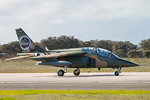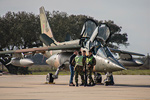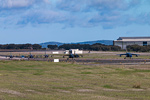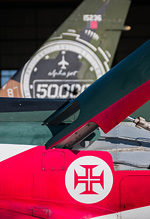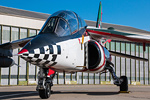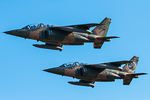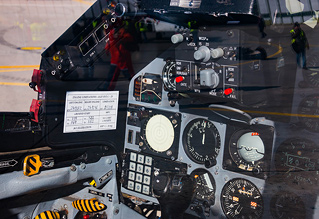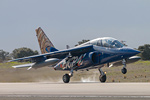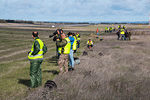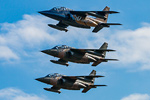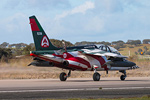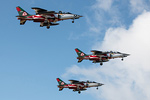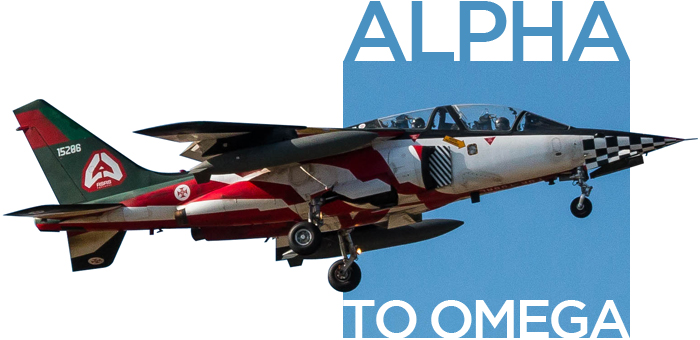
Portuguese Alpha Jet Retirement, Beja Air Base
Saturday 13th January 2018
The Dassault/Dornier Alpha Jet is an increasingly endangered species in Europe, with probably the most elusive breed being that of the cash-strapped and uncertain Portuguese Air Force. Despite purchasing a full fifty aircraft from the Luftwaffe in the early nineties, the PAF now only has six aircraft left in an airworthy condition, which are rarely, if ever, seen outside their home country. Considering the rarity of Portuguese aircraft on the European scene, it was pleasing to see the Air Force still put on a spotters day to mark the imminent retirement of the type from Portuguese service, and the event turned out to be a pretty successful send-off for the type.
travelled to Air Base No. 11 at Beja for the farewell spottersday and reports for UK Airshow Review. Photography by author.
Unusually for an event of this type, the spottersday was held on a Saturday, and it was just as well as the event was announced at sensationally short notice with the first advertisement only being made on the Monday beforehand on the PAF website and actual confirmation for any attendees of their place being posted on the Thursday. Full credit to the organisers, however, as they themselves only knew about the retirement a week before the event as well! Very little information was actually given before the event; after enquiring, all that was known was that all six aircraft would fly and land. Still, the last chance to ever see some Portuguese Alphas was hard to pass up and some hasty last minute travel plans were made.
In true aviation fashion, the weather forecast threatened to kill the day’s enjoyment, but with blue skies overhead at the gate as the sixty enthusiasts entered the base hopes were high. A bus took the spotters to the edge of the runway where movement was awaited with baited breath and people started to spread out to wherever they thought the best shots were to be had. First to take off was, in fact, a locally based A330 from HiFly chartering and leasing operation located at the base (who also owned the A340 that landed later in the day). However, it wasn’t long before engines were heard further down and soon a C-295M left with a fairly sporty departure, followed by the six stars of the day. Taking off in sticks of three, the trainers headed off about 80km north-west for some air-to-air photography with the CASA over Alqueva Reservoir, the largest lake in the country.
Forty minutes or so later the jets arrived back at Beja, and performed some formation work for the spotters and squadron, with the three Asas de Portugal schemed jets keeping together. The flying, well, wasn’t all that; as perfectly close as the formations were, there were only three passes. A virtual blink and you miss it moment. Fortunately, the Alpha Jets landed individually meaning each airframe had its time in the spotlight in one sense or another, especially the virtually unseen camouflage schemed aircraft which were the most anticipated among those present, judging by later attention. A quick hop back on the bus took everyone to the hangars at the north end of the base where the jets had parked up in a semi-circle. The squadron and families were gathered around the jets and this naturally took priority, so while they said their goodbyes the spottersday visitors took the time to warm up and browse the merchandise on offer - for those so inclined, each of the six remaining airframes had their own individual patch design on offer. Soon enough, the Air Force personnel had cleared and the spotters were allowed to get up close to the aircraft with pretty much no restriction.
It must be said that it was quite a small scale affair, lasting no more than four hours or so, but the organisers were pretty spot on with what the enthusiast audience were after. The small numbers allowed a good deal of freedom without the jostling and corralling often associated with these kind of events, and gave it a fairly intimate feel. Certainly the close access to the parked jets would have been unlikely had the numbers been over one hundred, it seems. Locals informed us that it was rare to have more than two serviceable at any one time over the last few years, so to have all six operational must’ve been a pretty heavy effort and offered a pretty unique sight to those that made the journey. On a personal note, I must give thanks to both the air force personnel and a couple of local spotters for going out of their way to come up to me and my friend to translate what was being said; the number of non-Iberian attendees could be counted on one hand, so we were a bit of a novelty and when announcements were being made we were fairly nonplussed.
Though the initial announcements and subsequent communication billed the event as the final takeoff and landing of the Portuguese Alpha Jets, it seems now that it wasn’t quite the final chapter for the trainer. The spottersday for Exercise Real Thaw, taking place on the 1st of February, lists the Alpha Jets as being in attendance; they’re clearly soldiering on for another few weeks, but their days are numbered and it's still, by all accounts, extremely unlikely that they’ll see the end of February before being retired. With France beginning to replace their trainer Alphas with PC-21s and QinetiQ’s also soon to be retired, it seems that Belgium will eventually be the last military operator of the type in Europe, notwithstanding the Patrouille de France.
